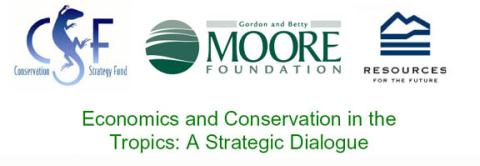
USA
In 2009 Conservation Strategy Fund gave its 11th annual international training course Economic Tools for Conservation at Stanford University. During the two-week course, participants learn to use economics to be more strategic and successful in their conservation work. Participants study natural resource and environmental economics, practice communication and negotiation techniques, and get hands-on experience with cost-benefit analysis. This course is presented in partnership with the Center for Conservation Biology at Stanford University and The Nature Conservancy.
Program
The course covers the following subjects:
Microeconomics
Market theory: supply, demand, market equilibrium, and competition.
Natural Resource Economics
Capital theory
Renewable and non-renewable resource extraction, markets, and policy trends.
Environmental Economics
Why markets are inefficient when it comes to environmental protection.
How economists place monetary values on the environment, and how these methods are best used in developing countries. Identifying opportunities and barriers for payments for environmental services.
Negotiation and Simulation Exercises
Exercises and instruction focused on policy negotiation skills.
Cost-benefit Analysis
Case studies evaluating the economic feasibility of small-scale and large-scale projects, including incorporation of externalities and sensitivity analysis.
Communication
Effective strategies for presenting economic analysis results.
Instructors
Economic Tools for Ecosystem Conservation is taught by experts in environmental economics who also have extensive field experience and understand real-world conservation challenges. They are drawn from several leading academic and international institutions including Stanford University, Harvard University, INCAE, the World Bank, and the University of California at Los Angeles. Additional instruction is delivered by CSF staff.
Cost
The cost for the course is $3,500 per participant. The tuition fee covers all meals, lodging, field trips and course supplies, but does not include transportation to and from Stanford University. All participants must cover their own travel expenses to and from the course site.
Location
The course will be held on the Stanford University campus in Stanford, California. Situated in the heart of Silicon Valley, Stanford is 25 miles from San Francisco and close to downtown Palo Alto. The beautiful 8,000-acre campus is surrounded by rolling oak woodlands and provides numerous opportunities for outdoor recreation. All course activities will take place at Stanford, with field trips planned in the surrounding area.
If you would like to apply for this course, please fill out the application. All application materials must be received by June 15, 2009. We encourage you to submit your application materials as soon as possible because we will make admission decisions on a rolling basis.







